The intranet has enormous potential to be the backbone of an organization’s internal communications and a productivity game changer, but truth be told, at times it can also be tasking to get around and difficult to use. Oftentimes the key question in making the intranet a success is: How can we keep employees engaged without creating distractions and at the same time adding value to their work?
Some of the world’s leading innovative organizations keep finding inspiring new ways to deal with that challenge internally. The most groundbreaking of these companies are increasingly incorporating AI to automate their organization and enrich it.
Chatbots have been one of the prominent areas many organizations are exploring in the field of AI. Gartner predicts 25% of digital workers will use virtual employee assistants daily by 2021. But where does an enterprise chatbot fit in with the intranet? How can we leverage the strengths of an organizational chatbot to benefit the intranet?
Here are a few ideas:
The intranet usage problem (and where users spend most of their digital time)
Probably the most common concern intranets face is adoption and usage rates. One of the reasons user adoption is a challenge, and is a typical complaint from users, is that getting into the intranet and navigating through it is too much of a hassle.
Chatbots, on the other hand, have two clear advantages over intranets:
- Most users always have a chat application open to speak to their colleagues. Therefore, chatbots in Teams, Slack, Skype and other messaging apps are much easier for users to access quickly.
- Unlike the intranet, which can seem complex to navigate, chatbots provide a simple and intuitive conversational user experience.
However, chatbots can’t replace intranets. Their simplified UX isn’t designed for complex tasks such as managing a document library or displaying lengthy content such as an article.
What if we can leverage chatbots’ approachability to pull users from where they already are (in Teams, Slack, or Skype) and bring them to the intranet?
A great way to do this is by integrating the intranet’s search mechanism into a chatbot.
For example, if a user would like to find certain documents or specific information, they could simply ask for that information through their chat app and get a link that leads them to the relevant page on the intranet.
This not only eliminates the need to open the browser or another app, but it also reduces friction and saves employees valuable time.
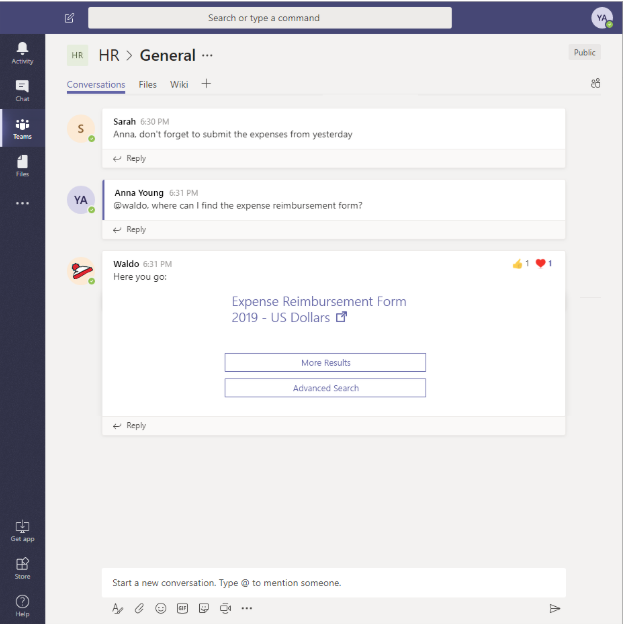
A chatbot that returns search results from the portal can save employees valuable time and make it easier to utilize content from the portal.
Another example is creating a news chatbot that presents relevant news items and announcements from the intranet in an engaging way.
For example, you could ask the news bot to show you the HR news stories from the past week and you’ll receive a gallery display of the matching items, which you can click on in order to view the full content in the intranet.
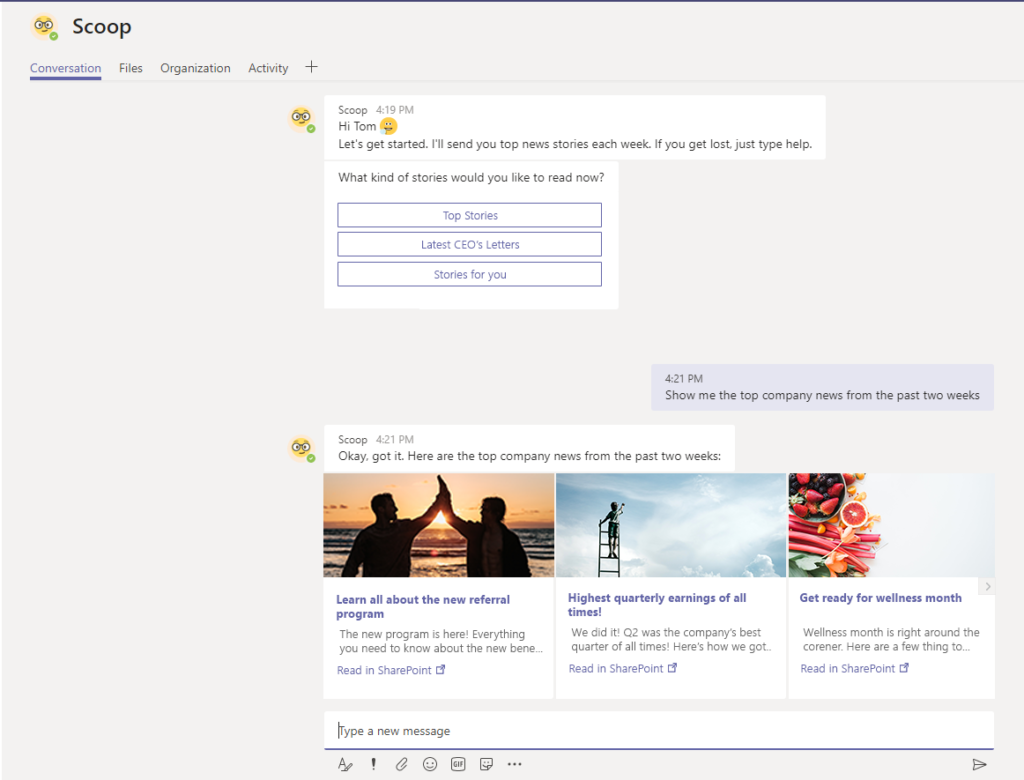
A chatbot for company and HR news can be a great way to keep employees well informed, in an engaging way,
while being an easy point of access to the intranet.
Automating repeating communications
Easing portal navigation is just one way chatbots can help save employees valuable time and boost their productivity.
Another excellent way to reduce users’ time and effort spent navigating the portal is to automate responses to common questions that are asked on the intranet.
From HR to IT to Marketing and more, all teams can benefit from creating an internal FAQ chatbot that answers basic recurring questions, whether internally for the team or for other teams in the organization.
“What’s the leave policy?”
“How do I connect to a printer?”
“Can I get the company’s svg logo?”
These are just a few examples of questions that are perfect for a chatbot. Automating these FAQs eliminates the need for other team members to come up with a response and provides inquiring users with an immediate response so they can get right back to what they need to do.

Automating… everything
But if you want to take automation a step further, just look at what Lemonade Insurance is doing with Cooper, their organizational chatbot.
Chatbots can help employees complete repetitive tasks they would do in the intranet, with the ease of typing a message.
Tasks such as creating a ticket, applying for leave, booking a conference room or even initiating a SharePoint workflow or a Microsoft Flow can be done quickly and easily through chatbots. There are endless creative ways to improve user experience and take productivity to new heights with chatbots.
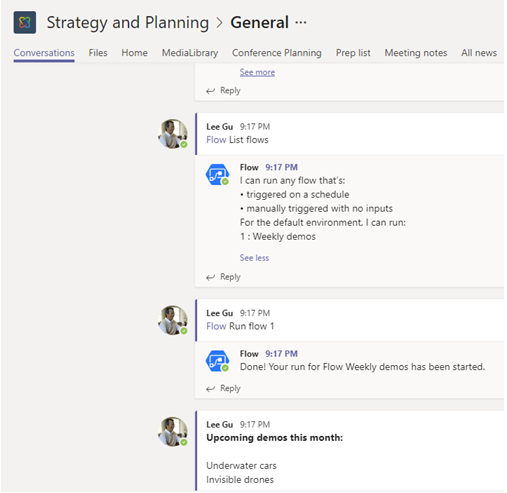
The Flow Bot in Microsoft Teams allows triggering custom or template-based Microsoft Flows via chat.
Interactivity
Built-in the form of a conversation, chatbots offer unique interactivity that can be far more engaging than static one-way channels.
That kind of interactivity can be harnessed to improve engagement in areas of the intranet that struggle with it.
A great example is replacing old-fashioned static forms and surveys with an interactive bot.
Besides having the advantage of replacing overwhelming forms with appealing bite-size interactions, chatbots have an added value of being able to change the form steps based on the user’s previous responses, creating a more sophisticated and beneficial experience.
One area in particular that can benefit from the interactive user experience chatbots provide is in onboarding new intranet users and making portal training much more engaging.
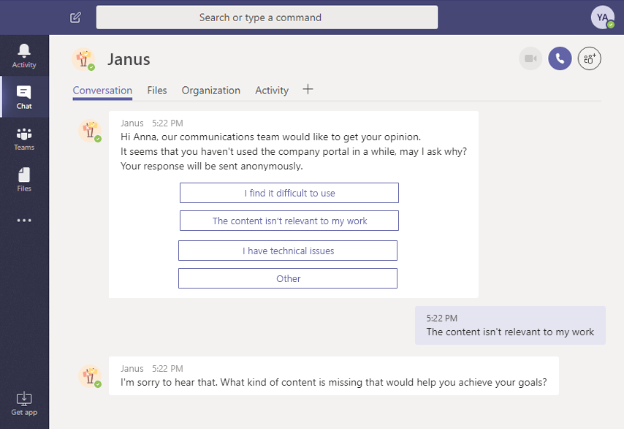
Bots offer an engaging alternative to old fashioned forms. In this case, a survey chatbot is triggered by
CardioLog Engage and targets inactive portal users to gain insights on the problems they are having.
Personalization
A lot has been said about the power of personalization in improving user experience, giving more value to users, and improving usability. Unfortunately, personalization can be challenging in an intranet that is static and serves a wide audience.
Conversational interfaces on the other hand, as a one-on-one conversation, have huge potential to add that missing piece of personalization. This is especially likely if the chatbot is programmed to interact based on user attributes or previous messages.
For example, you might want people from different teams to receive a different answer to the same question (such as questions regarding policies), or receive personalized information (like for questions such as “how many vacation days do I have?”).
Personalization can also be beneficial if you’re considering creating a basic chatbot for a company event, project, or promotion. An event-specific chatbot can get information from the user (such as attendance status, dietary restrictions and more) and provide users with personalized information about the event.
A personalized experience provided by a chatbot can also make processes such as HR onboarding and e-training much more beneficial and engaging and provide greater value to users.
Perfect timing
Chatbots also have the ability to trigger an interaction exactly at the right time. If chatbots are set to interact based on the user’s actions in the intranet portal, the potential is tremendous.
An important case is when a user appears to be struggling in the intranet. This can be detected if the user performs multiple searches and doesn’t find results, if they spend a lot of time going through search results if they get to broken links, or if they seem to be going back and forth multiple times.
All of these examples can be an indication of a user having difficulties with using the portal. These indications can be used as real time triggers for a chatbot to step in and offer help, whether it’s by answering simple questions, directing the user to a real person who can assist them, or even collecting information about the problem the user is having so it can be improved.
Learn more about triggering messages based on users real-time actions
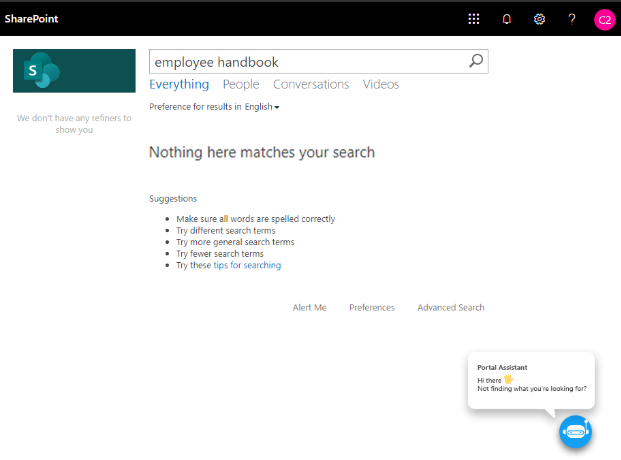
A chatbot triggered by CardioLog Engage to assist a user who is having issues with search
Measurement
Finally, chatbots have the strength of being measurable. They can keep track of trends of conversations and reveal significant insights on user needs, allowing the organization to constantly improve its digital workplace.
In conclusion
If you’re wondering whether you should invest in an enterprise chatbot for employees, there are many directions you can explore.
Chatbots have very unique strengths that can work in conjunction with the intranet, and not only complement it, but enhance it. When used correctly, chatbots can be innovative while at the same time simple and intuitive to use.
Whether it’s improving engagement, providing an enhanced user experience, boosting productivity, or increasing adoption, the sky is the limit with chatbots.
Related Topics:





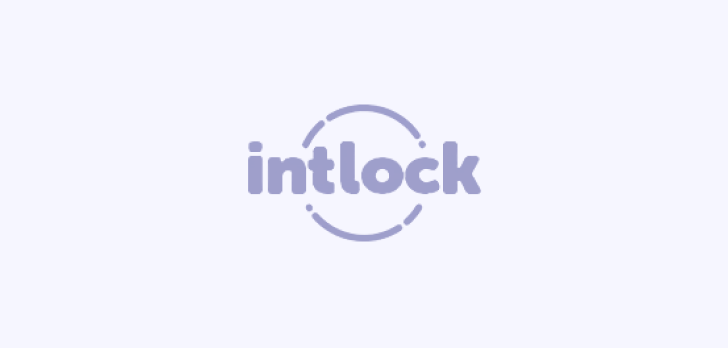
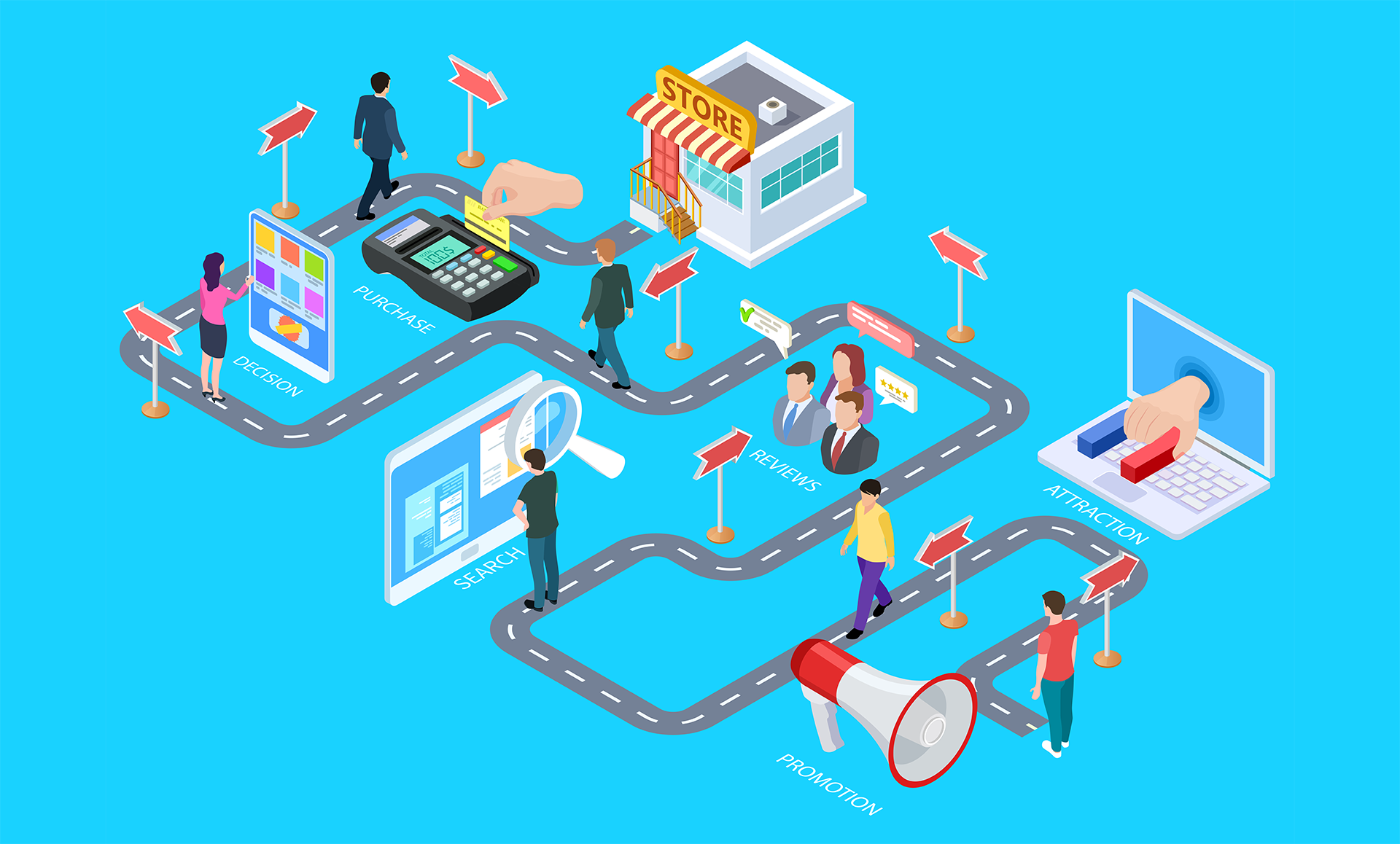

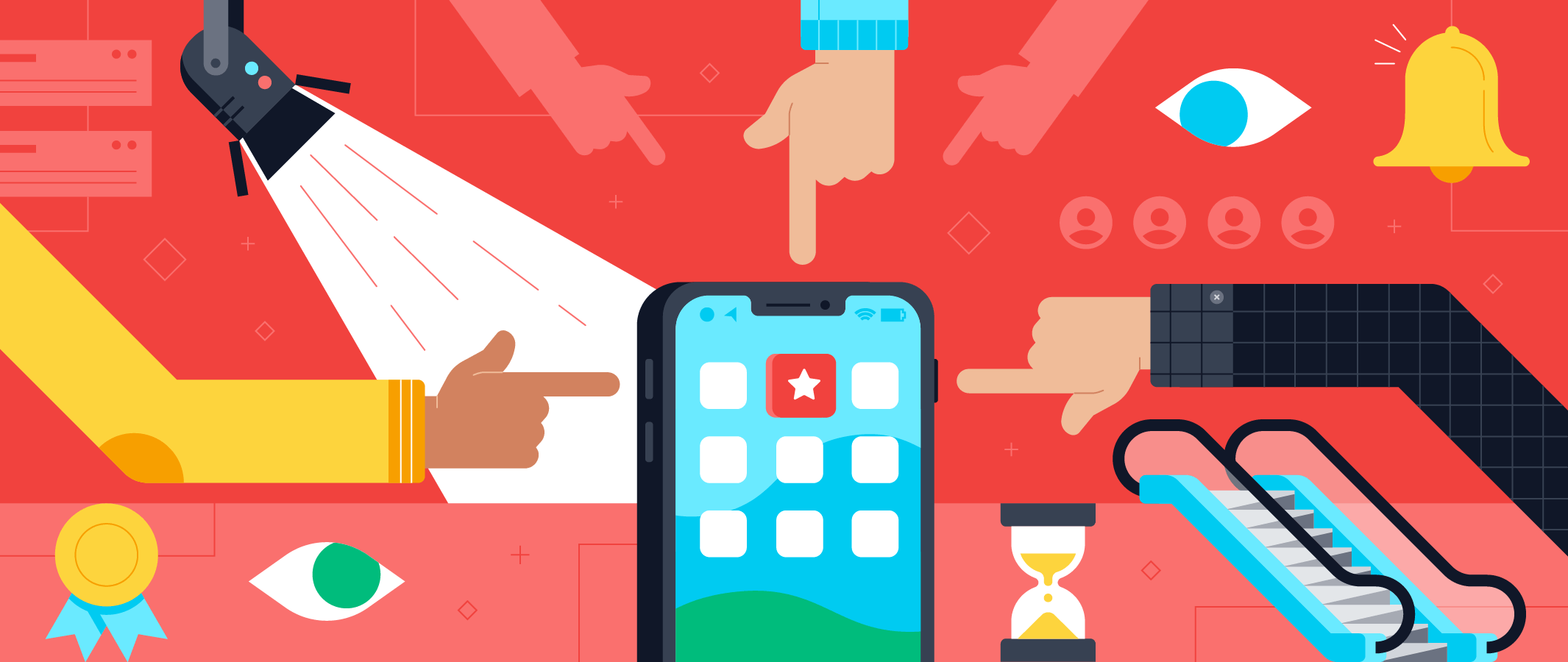

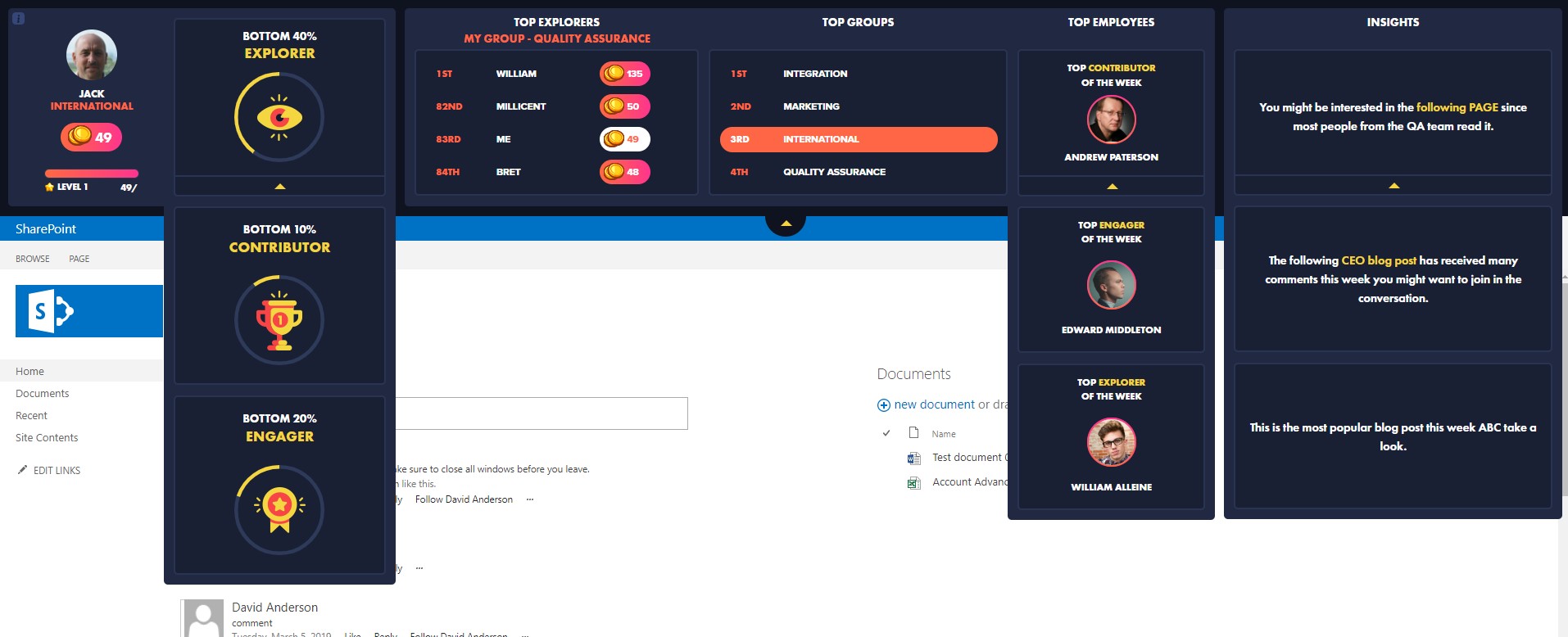

 Follow @cardiolog
Follow @cardiolog 